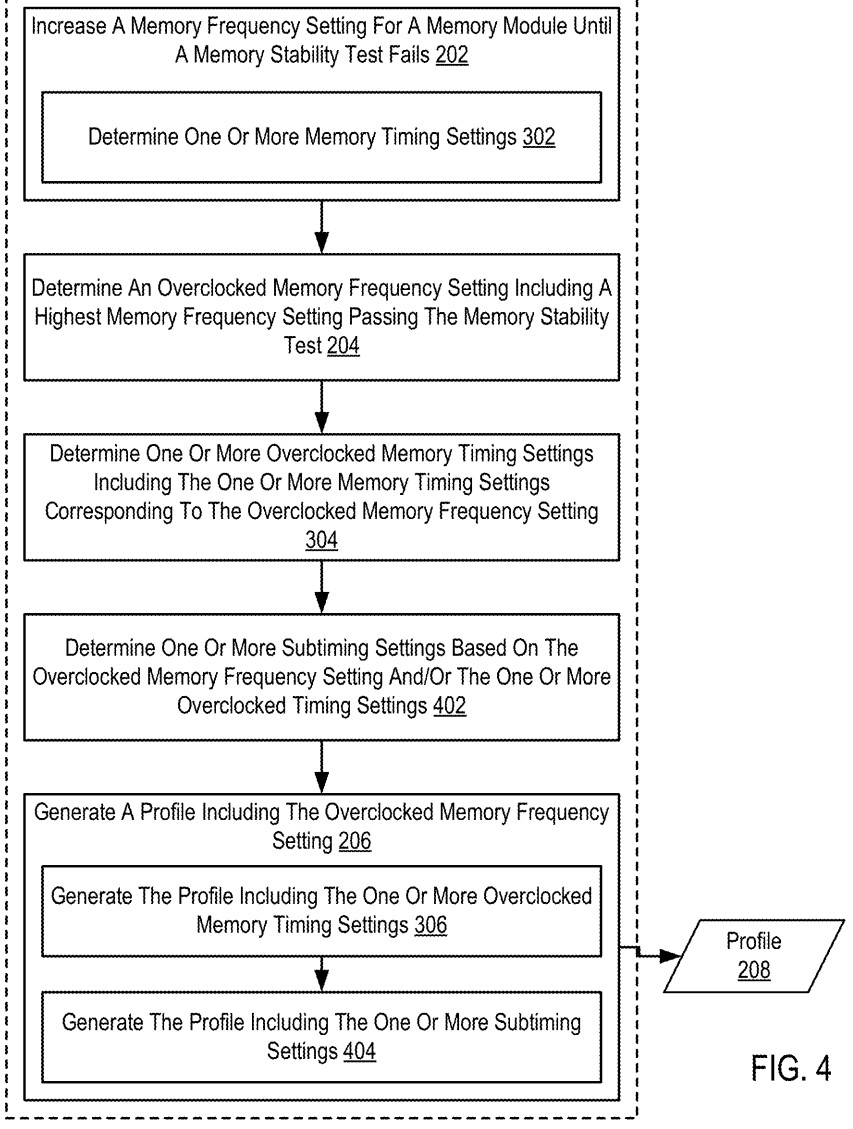While computer hardware these days adjust the core clocks dynamically, if you want increase the memory clocks, you need to increase them manually. It seems like AMD is exploring ways to make the memory clocks dynamic automatically as mentioned in a recently published patent:
Automatic memory overclocking, including: increasing a memory frequency setting for a memory module until a memory stability test fails; determining an overclocked memory frequency setting including a highest memory frequency setting passing the memory stability test; and generating a profile including the overclocked memory frequency setting.
We all know that during memory overclock, hardware stability is a key and we usually have to adjust these clocks manually on our GPUs/RAMs to avoid crashing. AMD patent wants to dynamically adjust these clocks based on the needs automatically. For that to happen, the system must test the maximum available stable frequency for the hardware and generate profiles based on that which in turn can be used for dynamic memory clock adjustments.

Now if you are wondering that what are the benefits of increasing GPU or RAM memory clock. Well, there is not a clear cut answer to that and it really depends on the application being executed. At its core, GPU memory clock functionality is somewhat similar to RAM’s memory clock. Increasing or decreasing it might not have considerable differences in performance but when it comes to bottlenecks, temporary changes in GPU memory clocks can certainly prove beneficial.
In some embodiments, a computer program product disposed upon a non-transitory computer readable medium includes computer program instructions for automatic memory overclocking that, when executed, cause a computer to perform steps including: increasing a memory frequency setting for a memory module until a memory stability test fails; determining an overclocked memory frequency setting including a highest memory frequency setting passing the memory stability test;
and generating a profile including the overclocked memory frequency setting.
For instance, if you increase resolution of a game from 1080p to 1440p, it will require more memory bandwidth to process the pixels for the user to display. Say that you have the GPU memory bandwidth to support that increased resolution but the memory clock isn’t fast enough to process it than there will definitely be a bottleneck and there can be performance issues.
So if a GPU or RAM can increase or decrease those memory clocks depending the tasks, it could be quite effective for the overall performance and memory temperatures. Also, it should be mentioned here that this is not the first patent for memory clock overclocking but seeing more patents on the concept indicates how much the company wants to work to improve them.
Now, I am not much of a tech expert so if you want more details about this memory overclocking, you can check out the patent yourself.

